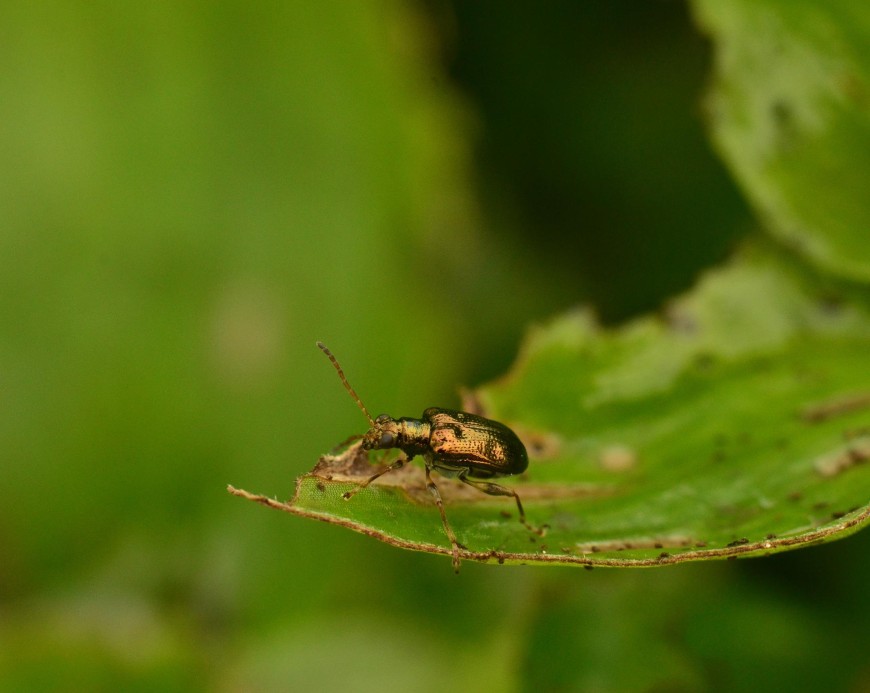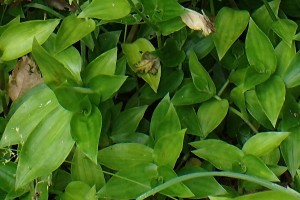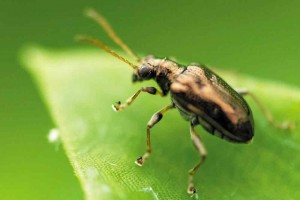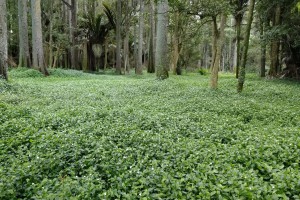Tradescantia leaf beetle
History in New Zealand
The tradescantia leaf beetle is native to south-eastern Brazil and north-eastern Argentina. It was first imported from Brazil by Manaaki Whenua - Landcare Research into containment for testing in 2007. Permission to release this beetle was granted by ERMA towards the end of 2008, but releases did not begin until 2011 because of the need to clear the beetle of a gut parasite. The beetle is establishing well, particularly in northern regions, and heavy feeding damage has been observed at some sites. This beetle has not been used as a biocontrol agent anywhere in the world before.
How would I find/recognise it and what is its lifecycle?
Adults may be seen feeding or resting on the upper leaves and shoots during the warmer months but may fall or fly away when disturbed. They are dark metallic bronze in colour with slight iridescence. Adults are 4–5 mm long and females are usually slightly larger than males. Adults have survived up to 5 months in captivity.
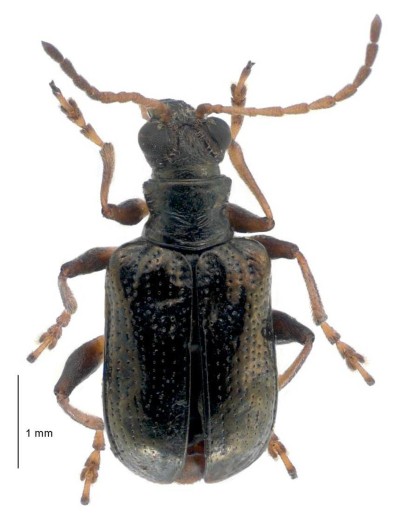
Image: tradescantia leaf beetle.
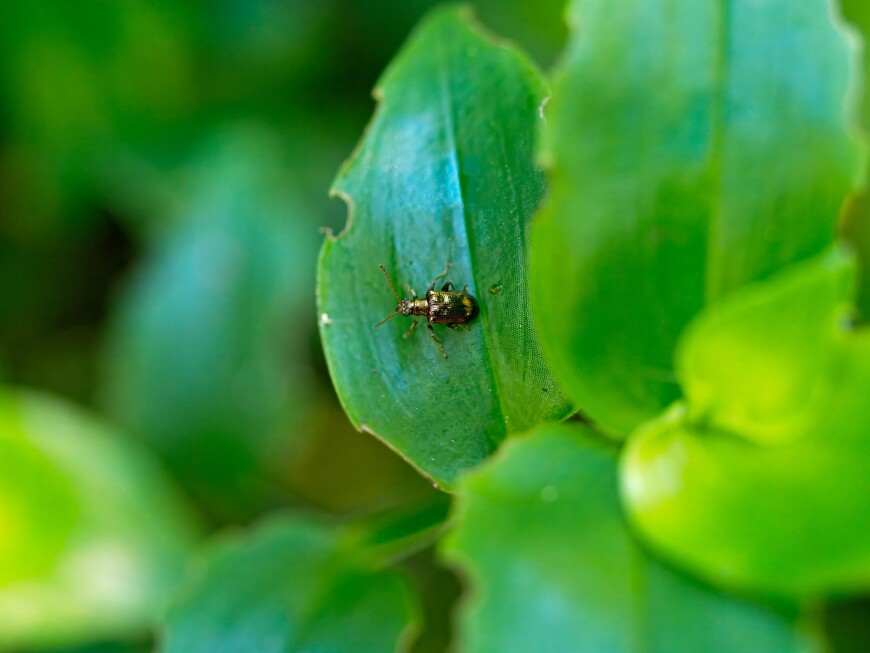
Image: adult tradescantia leaf beetle resting on upper leaves.
Females lay white eggs on the undersides of leaves, sometimes singly but mostly in clusters of 2–5. It is not known how many eggs they can lay but similar beetles typically lay 200–400 eggs over several months. The eggs hatch after about a week into pale greyish-brown larvae.
Image: tradescantia leaf beetle eggs.
The larvae accumulate moulted skins and excrement which they hold as a protective covering over their backs, presumably to deter predators. The larvae feed and grow through 4 or 5 instars. Young larvae are gregarious and may be seen forming feeding fronts. Older larvae feed individually.
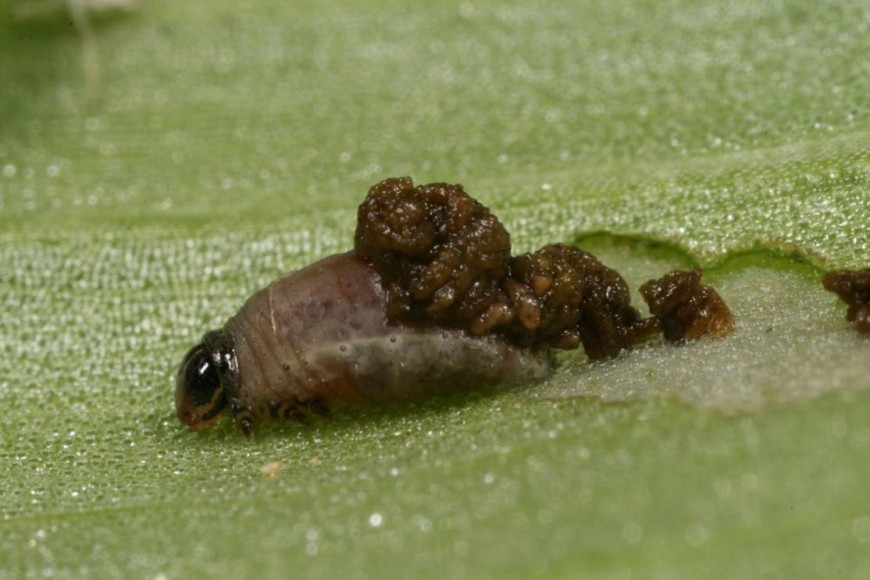
Image: tradescantia leaf beetle larva with protective cover.
Image: tradescantia leaf beetle larval feeding.
The pupal cocoons are extremely unusual and are often visible on damaged foliage. They are white, star-shaped and resemble styrofoam in texture and appearance. This may be another survival mechanism, to fool predators into thinking they are larvae infected with a fungus.
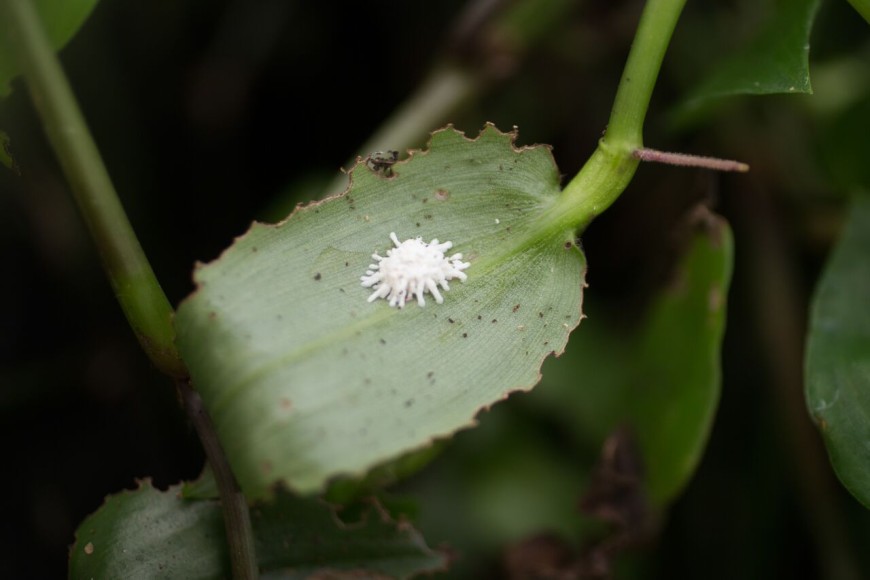
Image: tradescantia leaf beetle pupa. Image credit: Wellington City Council.
New adults emerge from cocoons after about 2 weeks. Development from an egg to an adult can occur in as little as 6 weeks at warm temperatures. The beetles are likely to complete 2-3 generations per year in New Zealand.
You may confuse some life stages of the tradescantia leaf beetle with other tradescantia biocontrol agents. Tradescantia stem beetle (Lema basicostata) and tip beetle (Neolema abbreviata) adults are a similar size but have different colouration. Stem beetle adults are black with a knobbly appearance and tip beetle adults are black with yellow wing covers with black markings. If tip beetle larvae are feeding on the leaves, in the absence of growing tips, they will be hard to distinguish from leaf beetle larvae. Cocoons made by the three species are difficult to tell apart. However, stem beetle pupae are more likely to be found lower down on plants or in the litter than leaf or tip beetle pupae.
See: Tradescantia stem beetle, Tradescantia tip beetle.
How does it damage tradescantia?
The adults chew the edges of the leaves and can consume entire leaves. However, the main damage is caused by larvae which graze the epidermal tissue off the leaves, mostly on the undersides, and can skeletonise them.
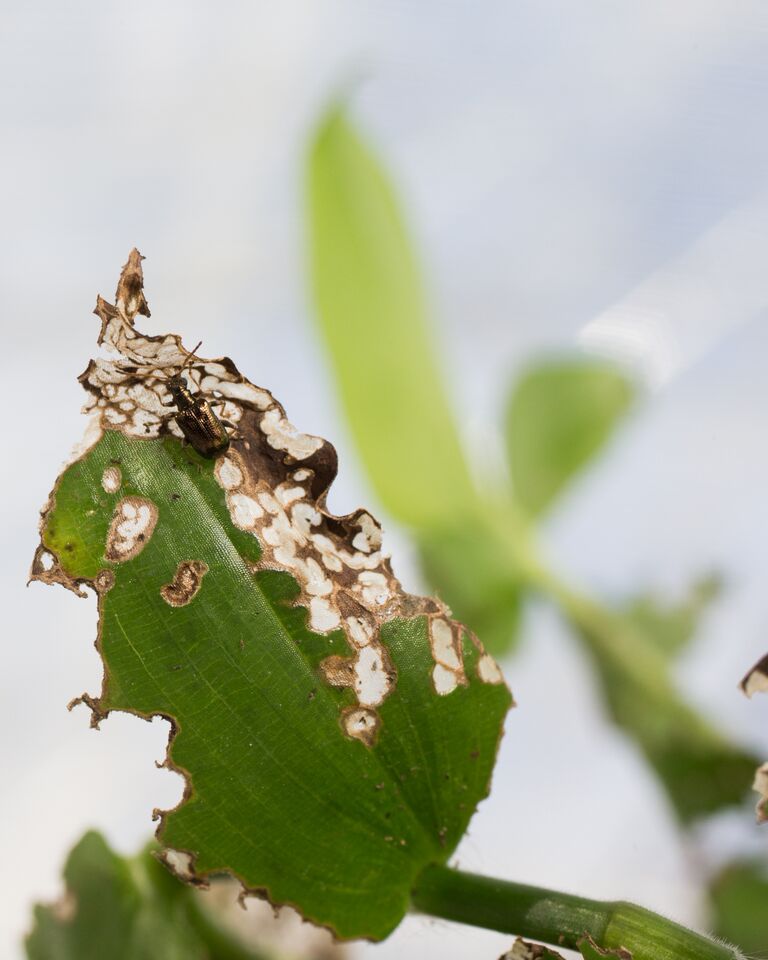
Image: tradescantia adult damage (chewing on side of leaf) and larva damage (windowing on side and center of leaf). Image credit: Wellington City Council.
Will it attack other plants?
The leaf beetle is highly host-specific and it is highly unlikely that anything other than tradescantia (Tradescantia fluminensis) and closely-related T. albiflora will be attacked.
How effective is it?
Extensive damage has already been seen at many release sites although there is some evidence that the leaf beetle is less abundant in riverine areas subject to flooding, and cooler sites further south. The tradescantia leaf beetle should complement attack by the other tradescantia beetles and the tradescantia yellow leaf spot fungus. A monitoring programme to measure the effectiveness of the tradescantia agents is underway.
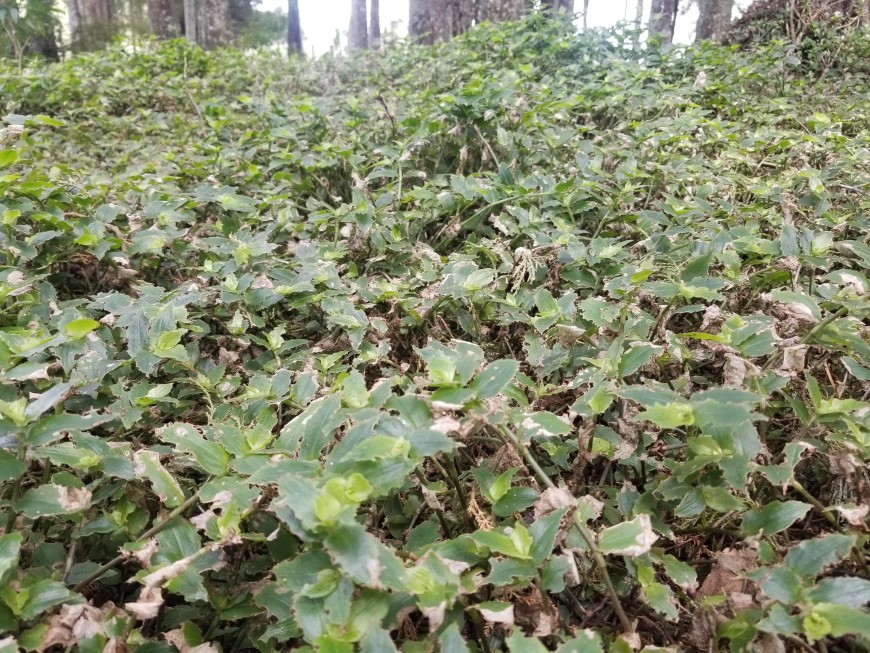
Image: tradescantia leaf beetle damage.
How can I get the most out of it?
The beetles are not expected to disperse rapidly so it would be worth helping to establish them in all areas where they are needed.
How do I select a release site?
Read Guidelines for selecting release sites for biocontrol agents.
How do I collect it for release at other sites?
Collect beetles for redistribution either with a pooter, small plastic container or a butterfly net. Shift at least 100-200 adults in the spring. Use a pooter to separate them from other material collected during the vacuuming process, which may include pests.
How do I manage the release sites?
Avoid any activities that will interfere with the beetles, such as herbicide application. If you need to undertake control measures, then avoid the release site.
Downloads
- pdf Tradescantia leaf beetle pdf File, 408 KB
- pdf Tradescantia beetle comparison pdf File, 325 KB
Key contact


